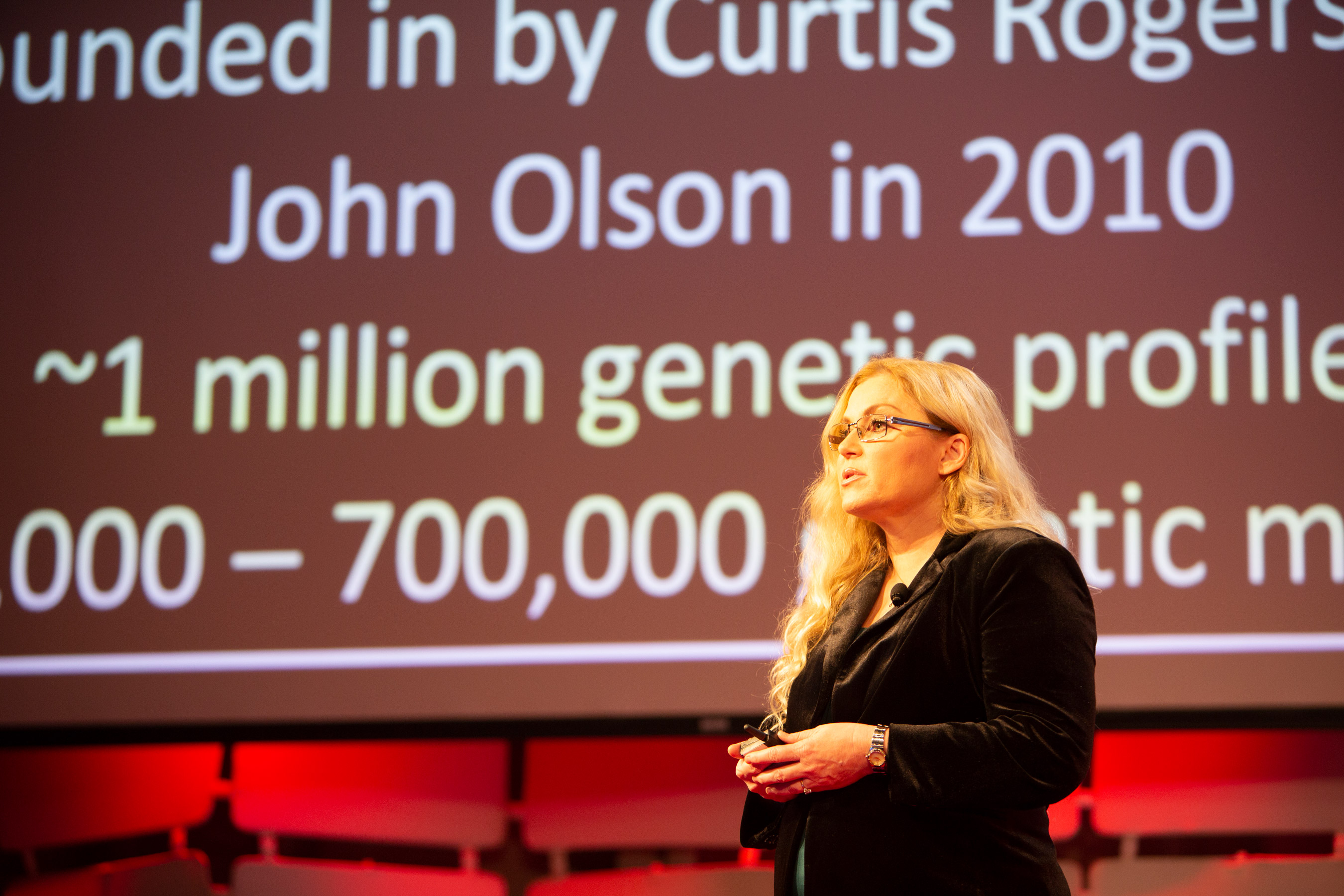“Hundreds” of crimes will soon be solved using DNA databases, genealogist predicts

Suspects in hundreds of unsolved murders and rapes will be identified using public DNA databases in the near future, a prominent genealogist predicted during MIT Technology Review’s EmTech conference today.
CeCe Moore, head of a genealogy unit at Parabon Nanolabs, predicted that “dozens” of cases will be solved in coming months in the US.
The company has already helped US police forces identify suspects in nine grisly crimes since last spring. It does so by using crime-scene DNA to locate relatives who have uploaded their own profiles to a consumer genealogy service.
Once blood relatives are located, the identity of suspects can be inferred from family trees.
In late August, for example, Illinois police arrested Michael Henslick for the murder of Holly Cassano in her home a decade ago. The lead started with a genealogy search, said Moore.
The pace of genetic crime-solving is increasing. In addition to Moore, who says she now oversees three other genealogists, California police have been working with family tree builder Barbara Rae-Venter, whose work on the Golden State Killer case brought the new crime-fighting technique to wide attention last year.
In addition, a volunteer group called the DNA Doe Project has been identifying human remains, and a forensics organization, Identifiers International, has said it is working on a dozen murders.
More labs are also willing to help police departments turn crime-scene DNA into datab files compatible with online genealogy databases. “There is a new little industry springing up,” said Moore.
According to Moore, about half the cases she works on can be solved using genetic genealogy. The rest are not possible to crack because no close genetic match is yet available. The genetic comparisons are made using a publicly accessible database called GEDMatch.
Genetic genealogy is mostly an amateur pursuit, and so using it to solve crimes does present some risks, warned Moore.
“Many people are going to police departments to offer services, and that concerns me very much,” she said. “It could give a bad example if anyone pointed to the wrong person.”
So far, genetic genealogy has succeeded in narrowing police investigations, often to a single person. Moore said police forces often have lists of hundreds or thousands of potential suspects before they begin employing DNA.
Watch CeCe Moore’s interview with MIT Technology Review’s senior editor for biomedicine, Antonio Regalado.
Deep Dive
Biotechnology and health
How scientists traced a mysterious covid case back to six toilets
When wastewater surveillance turns into a hunt for a single infected individual, the ethics get tricky.
An AI-driven “factory of drugs” claims to have hit a big milestone
Insilico is part of a wave of companies betting on AI as the "next amazing revolution" in biology
The quest to legitimize longevity medicine
Longevity clinics offer a mix of services that largely cater to the wealthy. Now there’s a push to establish their work as a credible medical field.
There is a new most expensive drug in the world. Price tag: $4.25 million
But will the latest gene therapy suffer the curse of the costliest drug?
Stay connected
Get the latest updates from
MIT Technology Review
Discover special offers, top stories, upcoming events, and more.